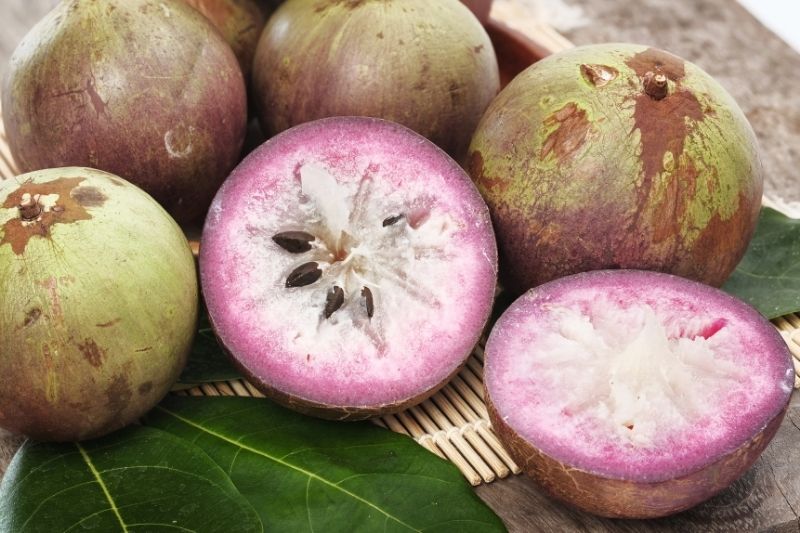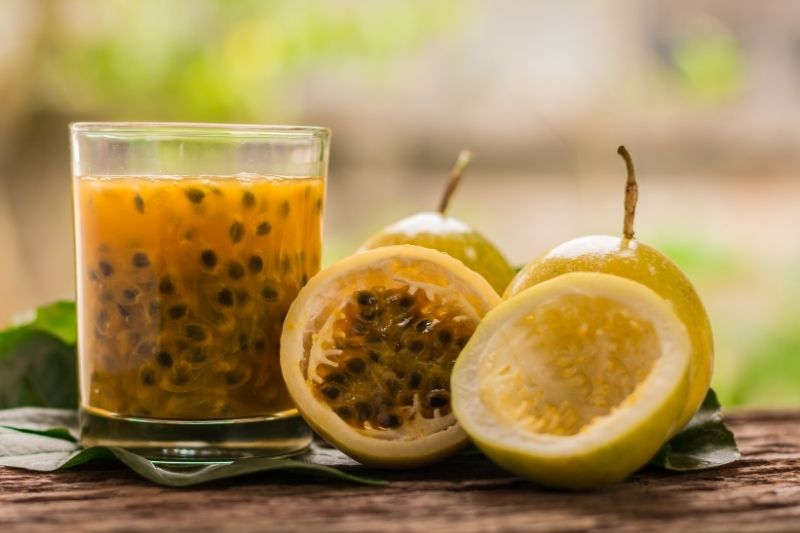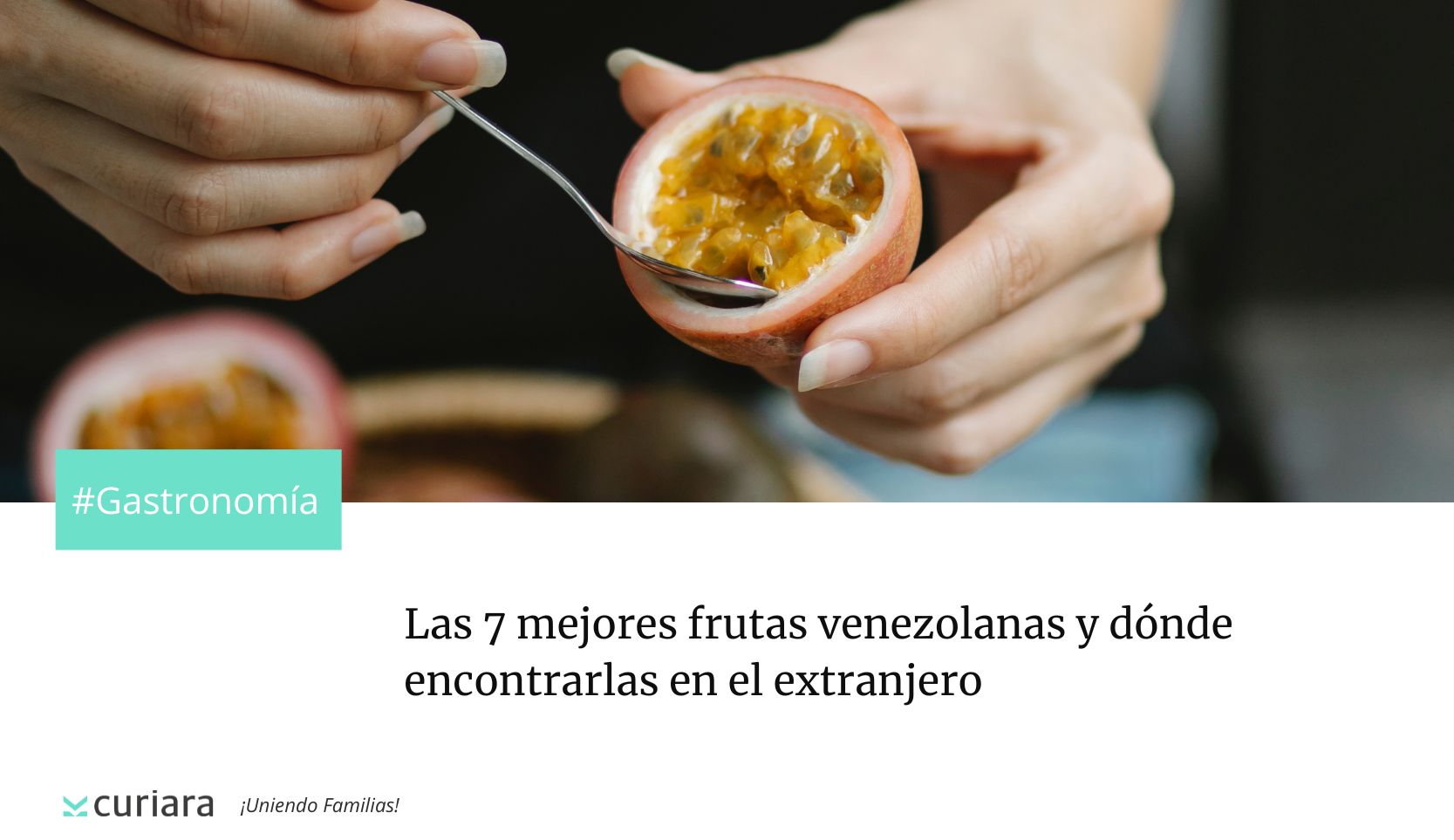The Venezuelan fruits are not only tasty, they are also full of memories. If you grew up in VenezuelaIf you've tasted more than one freshly picked from the tree, in natural juice or as part of a homemade dessert, you're sure to have tasted one.
The merey, la guama, la curuba... each one has its own particular history and flavor. And when you live abroad, especially in United Statesthose flavors become little treasures that connect us to our roots.
Missing the food is one of the most common things when one emigrates, and fruits do not escape from that.
It's not just for the taste, but for everything they represent: childhood, family, warmth of home. Fortunately, even if we are not there, nowadays it is possible to find many of these tropical delicacies, whether they be fresh, in juices, jams or frozen.
In this article we share with you a list with thes 7 most beloved Venezuelan fruitstheir taste, what they mean to us, and above all, where you can find them if you live in the U.S.. Because we know that sometimes, a guava or a tamarind can make you feel a little closer to home.
The 7 Venezuelan fruits you should try again (and look for!)

Sometimes the first bite is enough to bring back memories. These fruits are not only delicious, they're also loaded with history, culture and a lot of identity.
If you have ever tried them in Venezuelawe bring you a perfect excuse to look for them again. And if you didn't know them, get ready to discover unique flavors that you may not have known existed.
Curuba: the Andean cousin of parchita
The curuba is a Andean fruit, cylindrical in shape and orange to salmon in color, which closely resembles the parchita inside, with seeds wrapped in an acid and refreshing pulp. Its flavor is soft, a little citrusy, and is mainly used to prepare juices.
At Venezuelayou can find it in cold areas such as Mérida, Táchira or Colonia Tovar. At United Statesyou can search for it as banana passionfruit in stores specializing in tropical or Latin fruits.
It is not very common, but in Hispanic or Andean marketss, it is sometimes available frozen or in nectars.
Anon: the so-called blancmange
With its rustic appearance on the outside and a white and creamy flesh on the inside, the anon is related to the soursop and melts in the mouth. Its flavor is sweet and soft, and in ancient times the Spaniards called it "blancmange".
In addition to being tasty, it is highly nutritious: it has vitamin C, iron and healthy calories. Although it is an uncommon tropical fruit outside the Caribbean, you can search for it as sugar apple or custard apple in the Caribbean or Asian markets in the U.S., especially in Florida and California.
Jobo: that bittersweet taste of eastern Venezuela
The jobo is a fruit of intense flavor, between sweet and sour, very typical of eastern Venezuela. Its peel can be yellow, red or orange, and when opened, a juicy pulp appears surrounding a large seed.
At Central America they call it "jocote", so you can look for it under that name in Latin stores, especially in states such as Texas or California. You can also get it in syrup or dried as a snack.
Merey: much more than a nut
Most of them are familiar with the merey as a dried fruit, but few have tasted its fresh fruit. Red in color and strong smelling, this pseudofruit is acidic and astringent, ideal for making preserves or homemade jams.
Although it is difficult to find fresh in the United States, you can search for cashew jams or marmalades in Venezuelan online stores, such as Mandalo Marketor inquire in Brazilian markets, where it is also consumed as "caju".
Caimito: sweet, creamy and star shaped
The caimito is a fruit that surprises when cut in half: its interior is star-shaped. On the outside, it can be purple, green or yellow, and inside its pulp is sweet, milky and very pleasant.
That's right, should only be eaten when ripeOtherwise, it may leave an astringent sensation in the mouth. At United States is known as star apple and is usually found in Asian or tropical markets, especially in season.
Uchuva (or topo-topo): small but mighty
The cape gooseberry is that little yellow fruit that comes wrapped in a kind of dried flower, like a natural gift. Its flavor is somewhere between tomato and tangerine, with a juicy texture and an intense aroma.
Although it is better known in Colombiain Venezuela also occurs in temperate zones such as the Colonia Tovar. At USA you can find it as goldenberry or physalis at organic stores, Whole Foods or even Trader Joe's.
Pijiguao: the Amazonian fruit that looks like a vegetable
The pijiguao is a palm fruit that is cooked before being eaten and was a key part of the indigenous diet. Its texture is similar to that of a cooked potato, but with a sweet and earthy flavor.
Although in Venezuela is used for to prepare arepas or eat it with butter, outside the country is quite rare. It is sometimes found in Colombian markets or stores, since in Colombia is also typical.
Tips to get these fruits in the United States

We know that finding Venezuelan products It may seem like mission impossible, but with a little patience and these tips, you can do it easier than you think:
- Search in Latin markets: many supermarkets catering to the Latino community carry tropical fruits, especially if you live in areas such as Florida, Texas, California or New York. Some recommended chains are: Sedano's, Bravo Supermarket and Fiesta Mart.
- Asian stores that surpriseTropical fruits: Believe it or not, many Asian stores carry an incredible variety of tropical fruits. This is because they share similar climates with Latin America and have a high demand for fresh produce.
- Explore online stores: if you prefer to search from home (or don't have markets nearby), the online world has some interesting options. Some websites where you could get fresh or dehydrated fruits are: Fruit Hunters, Miami Fruit, Amazon (for products such as pulps, preserves or tropical snacks), etc.
What if you can't get them fresh? Here are some other options
Don't worry if you can't find the fruit as you remember it. Sometimes you don't have to have it fresh to enjoy its flavor. Here are some ideas to keep the tropical spirit alive in your kitchen:
- Frozen pulps: brands such as Goya, La Fe or Tamarindo House sell fruit pulps such as guava, tamarind, curuba or soursop. They are perfect for juices, desserts or even to use as a base for sauces or smoothies. They are available in Latin and Asian supermarkets and some large chains such as Walmart or Publix.
- Imported juices and nectars: Another option is ready-made juices. Look for products that say "nectar de..." or "juice 100% natural". Some Venezuelan and Latin American brands export jobo, cashew, parchita juices and more.
- Venezuelan preserves or jams: the icaco candy, cashew preserve or guava jams are a great way to keep these flavors in your pantry. Some brands such as Alimentos La Montaña, Mi Tierra Latina or Productos El Carabobeño have preserves ready to enjoy.
Do you miss the taste of home? Do you miss the taste of home? chilled guava juice or the sweetness of an anon just opened? At Curiara we understand you perfectly.
We know that being away from Venezuela is not only leaving behind a place, but also those flavors that were part of your daily life. That's why we have made this article, to help you reconnect with those flavors that were part of your daily life. Venezuelan fruits that mean so much. Because even if you are thousands of miles away, there are always ways to feel a little bit closer.
And if you are in FloridaAlso, don't miss our article on where to find Venezuelan food in Orlando.
Curiara, uniting families.
